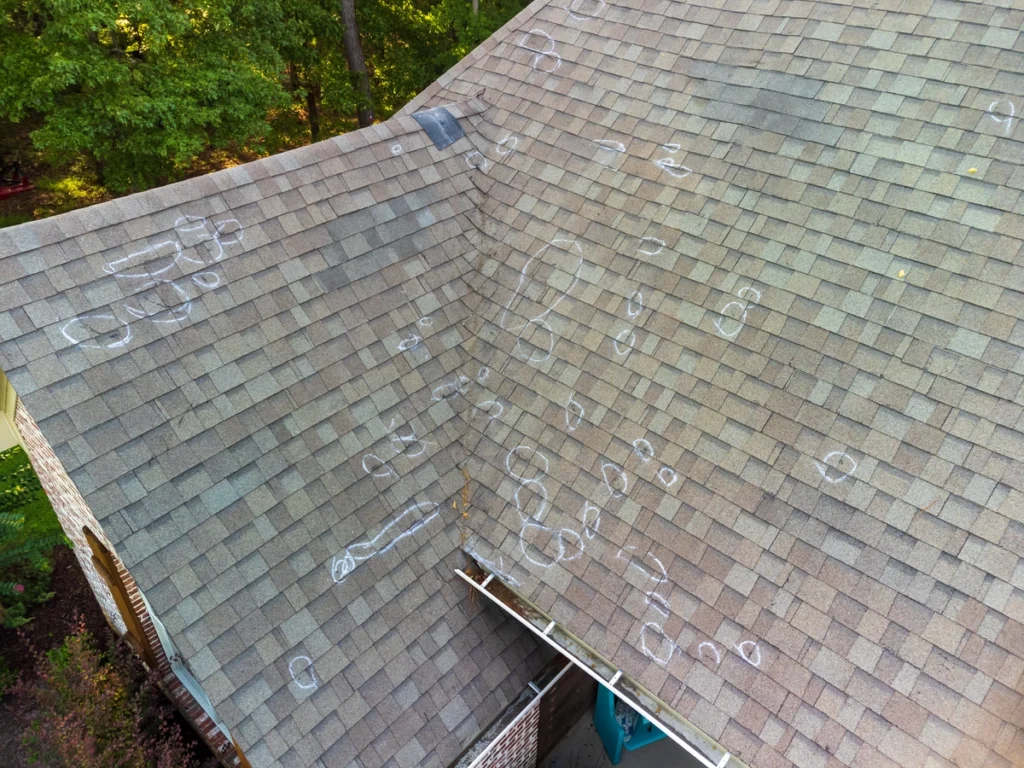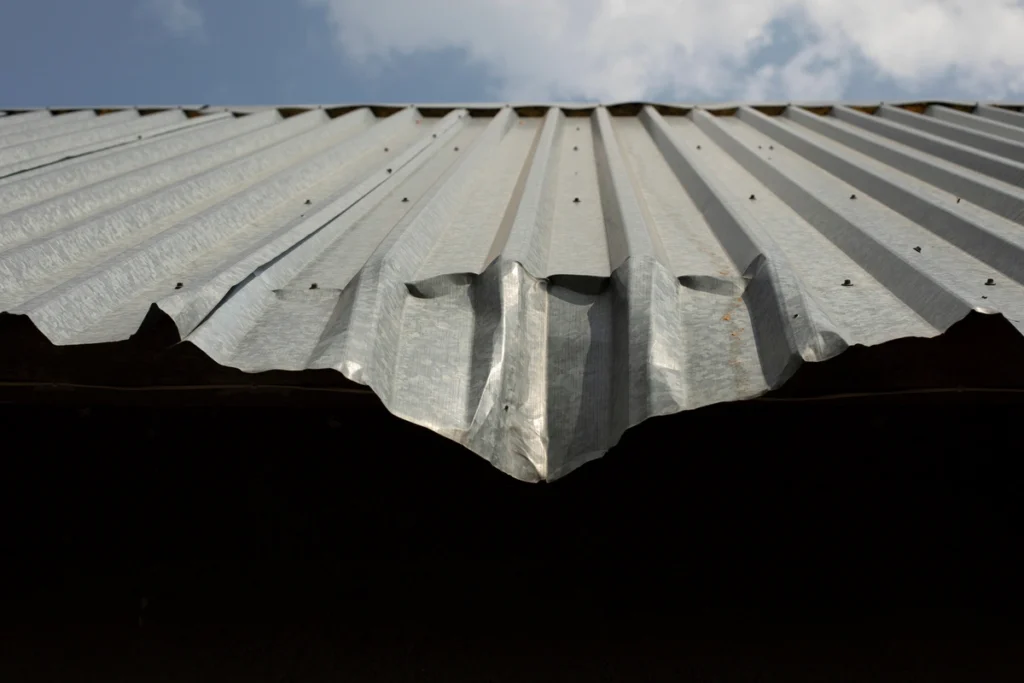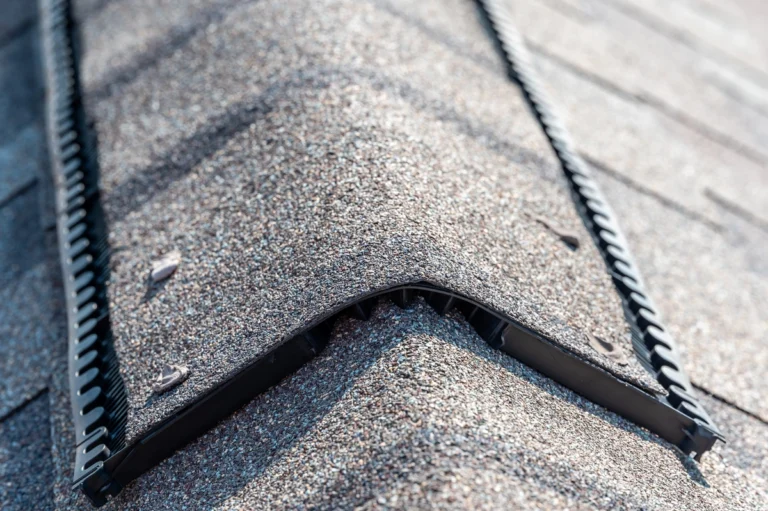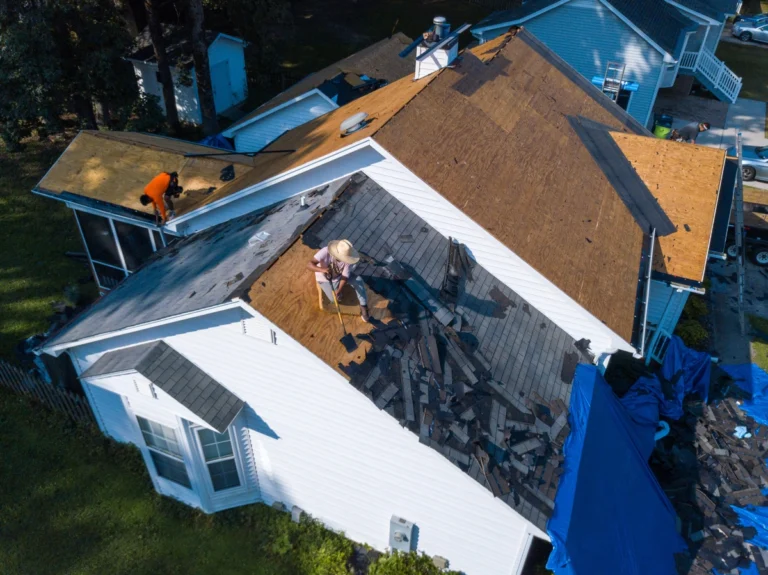Do you worry about the vulnerability of our roof during hail storms? Hail damage after a storm can be a nightmare for homeowners. You can experience severe damage, like cracked or dented shingles, that requires replacements or repairs. Or have minor effects like color patches or spots on the roof at the point of impact.
The damages in the impact depend on the degree of the storm, winds, size, and density of the hailstones, and the type of roof. Inspecting your roof after a hail storm is essential in determining the nature and amount of impact on the roof.
Quick actions on the damaged roof prevent further consequences like leakages, poor insulation and energy management, and mold infestations in damp areas. Learn more about hail damage and the signs of storm damage on roof shingles.
Asphalt Shingle Roof

Asphalt roof shingles are one of the most common types of roof. You can find them in different colors and textures; hence the damage could present differently on other variants. Heavy storms with winds often cause the shingles to crack or fall off, resulting in missing pieces and scattered debris around the house.
Other signs of hail damage on asphalt shingle roofs are:
- Color spots, usually black, on the roof shingles
- Exposure of the roof underlayment due to the impact/ penetration of the hailstones that make the shingles’ granules chip away
- Missing shingles
- Soft spots on the damaged area
- No distinct pattern of the damage
The most affected area on asphalt roofs is those directly exposed to hailstorms, like the edges of the eaves. You’ll find random and mildly damaged shingles on the slopes and fields of the roof.
Ensure you inspect your asphalt roof after a hailstorm to ascertain the extent of the damage. If you had previously damaged shingles from other causes, the impact might be heavier on your roof. If you aren’t well-equipped to climb up the roof and walk around to inspect it, ensure you get an expert to help you affirm the damage.
Clay/Concrete Roof

Though clay and concrete roofs are some of the heaviest roofing materials, their brittleness makes them more vulnerable to hail storms. The impact of denser hailstones on clay roofs can cause them to spit or crack under pressure.
Strong winds accompanying storms push away the debris and damaged clay shingles off the roof deck. Also, it exposes the roof underlayment – the primary roofing defense against leakages and moisture retention.
Wood Shingle Roof
The weaknesses of wooden roof shingles in moisture absorption make them quite vulnerable during storms. An outright sign of wood shingles hail damage is split or cracked shingles. A heavier impact by denser hailstones causes the particles and the cracked shingles to scatter around the house and roof.
Missing shingles expose the roof and may cause leakages if many shingles get blown away. Wooden shingles’ vulnerability to absorbing moisture and their expansion in different weathers often lessens their structural integrity and composition. It causes the shingles to split, warp, or reduce the roof’s nail fasteners’ strength.
A hailstorm on such a weakened roof could damage the roof further. There will be more missing shingles that could necessitate an entire roof replacement. If you can notice the missing gaps before climbing to the roof, the extent of the roof damage could be quite significant.
Don’t confuse splits from other causes like its composition or fallen objects with that of hailstorms. The area of the wood shingles damage helps you determine the impact of the hailstorm. Splits with no deterioration on the edges and sharp corners or edges, show damage from a rapid and high-pressure impact on the spot.
The color of the split shingles should be red, indicating a recent split because of the hailstorm. Splits from previous causes are often gray and could appear older than others. You’ll also notice impact splatter marks on the wood shingles from hailstorms. The dents disappear after a while hence the need to contact insurers immediately for a worthy reimbursement on the claims case.
The good news on wooden roof shingles is that if the hail storm doesn’t split them, the roof remains intact, saving you from extra repair or replacement costs.
Metal Roof

Metal roofs are the recommended hail-resistant roof types. Metal roofs meant for residential roofing have a sturdy structural composition and structure that protects the house from the heavy impact of the hailstones on the roof. You mustn’t use low-quality metal roofs meant for sheds or barns as they can easily get damaged, thus exposing your roof and house.
They are made from high-grade steel that withstands hailstorms, with the only evidence of the storm being minor surface dents. Look out for round, colored spots on the roof. However, you must be keen to identify these spots on the roof, and pursue a roof replacement depending on the severity.
Factors Affecting Hail Impact on the Roof
Hail damage on the roof depends on numerous factors. Besides the type of roofing material and roof, consider the size and density of the hailstones. The heavier the stone, the greater the impact on the roof. In contrast, lighter stones might have little to no impact on any type of roof.
The direction and speed of wind determine the area on the roof that’ll be most affected. Increased speeds can blow away more shingles leaving the roof significantly exposed. Barriers around the house, like trees, reduce the storm’s impact and winds, thus reducing hail damage.
Beware of imitation signs of hail damage like worn-out and faded shingles, brittle and flaking shingles, and blistering signs on the shingles. Proper assessment of hail damages after a hail storm allows you to pick the correct action to save on costs. Ensure you contact insurers for an inspection after the storm to quicken the claims process.
Hail Damage on Roofs
The extent of hail damage on the roofs depends on various factors. However, consider getting hail-resistant roof grades if you live in an area prone to hail storms. The most common sign is finding broken or cracked shingles and debris on the roof, roof deck, and around your house.
Visible patches of missing shingles from the ground should prompt you to take quick action for their replacements. If you can’t climb to the roof to verify the damage, look for a roofing expert near you to help you. Contact Sundance and let us help you identify, analyze, file, and solve your roofing problem after a hail storm.





